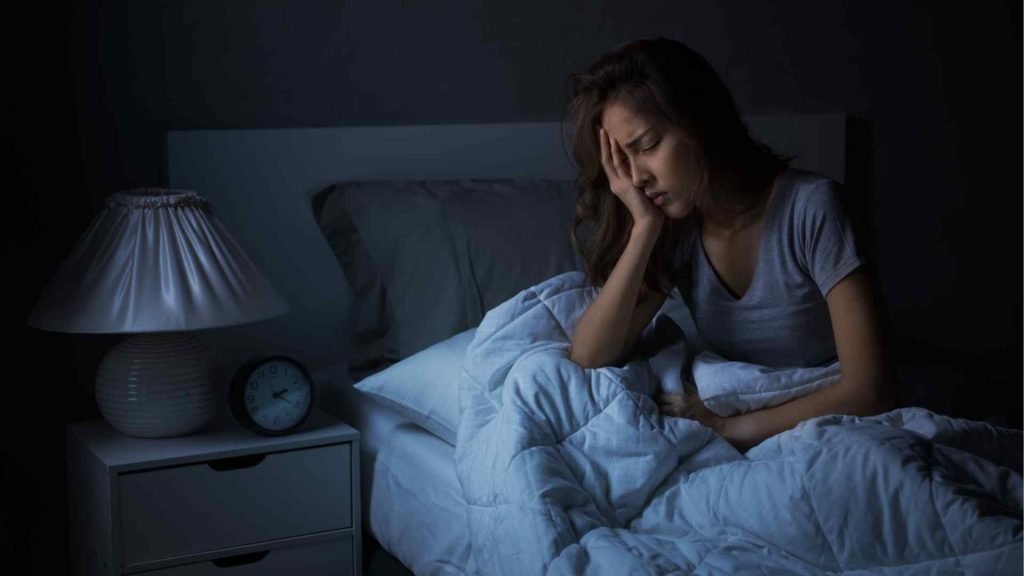In addition to lifestyle changes, finding the right approach to managing withdrawal-related insomnia can be crucial for long-term recovery. Identifying strategies that promote relaxation and reduce nighttime restlessness can help individuals navigate this challenging phase.
If opioid withdrawal is disrupting your sleep, explore how our Opioid Addiction Treatment Program in New Jersey can provide the guidance and support you need.

Establish a Bedtime Routine
Improving sleep quality during opioid withdrawal is crucial to reducing the risk of relapse and opioid-seeking behavior. One effective way to enhance sleep hygiene during this period is by maintaining a consistent sleep schedule to regulate your body’s internal clock.
Establishing a relaxing bedtime routine, such as reading or taking a warm bath, can signal to your body that it’s time to wind down. Ensuring that your bedroom environment is conducive to sleep by keeping it dark, cool, and quiet is also important.
Practicing relaxation techniques like deep breathing or meditation can help calm your mind and improve sleep quality during opioid withdrawal.
Medication Options for Opioid Withdrawal Insomnia
Addressing insomnia during opioid withdrawal may sometimes require medical intervention. Consulting a healthcare professional can help determine the safest and most effective sleep aid options based on individual needs.
Melatonin, a commonly used natural supplement, can assist in regulating sleep cycles. However, caution should be exercised when using over-the-counter sleep aids such as antihistamines, as they may lead to dependency or unwanted side effects.
In cases of severe insomnia, prescription medications like zolpidem (Ambien) might be considered, but they require careful monitoring due to potential risks, including dependence and respiratory suppression. Before starting any sleep aid, it’s essential to seek medical advice to ensure safe and effective management of withdrawal-related sleep disturbances.
Duration of Withdrawal Insomnia
The duration of insomnia during opioid withdrawal varies significantly among individuals. Some may experience acute insomnia, a short-term sleep disturbance, while others may face chronic insomnia, characterized by long-lasting difficulties in falling or staying asleep.
Typically, sleep problems peak in the first two weeks of opioid withdrawal. However, the recovery from insomnia can vary widely, ranging from several months to potentially years. Individual factors such as overall health, mental health, substance use history, and stress levels play a significant role in determining the length and severity of withdrawal-related insomnia.
Read more about the duration of opioid withdrawal.

Additional Tips for Better Sleep During Opioid Withdrawal
To improve your sleep during opioid withdrawal, here are some helpful tips:
- Stick to a consistent sleep schedule
- Keep your bedroom cool
- Avoid caffeine and screens before bedtime
- Minimize excess light
These simple adjustments can help create an environment conducive to better sleep quality and aid in managing insomnia symptoms during withdrawal.
Keep Your Room Cool
To improve sleep quality during opioid withdrawal, it’s recommended to maintain a room temperature between 60-67°F. A cooler room temperature can help signal your body to prepare for rest, lower core body temperature, and promote relaxation, aiding in sleep onset.
This can also support your natural circadian rhythm, enhancing overall sleep quality during opioid withdrawal. By creating a cool environment, you may reduce night sweats and discomfort often experienced during this period, leading to a more restful sleep.
Avoid Caffeine and Screens Before Bed
To optimize your sleep quality during opioid withdrawal, it’s essential to consider factors like caffeine intake and screen usage before bedtime. Consuming caffeine close to bedtime can disrupt your ability to fall asleep, so it’s best to avoid caffeinated drinks in the evening.
Screens emit blue light that can disrupt your sleep cycle, especially during withdrawal. Instead of screen time, opt for a calming bedtime routine to signal to your body that it’s time to relax.
Reduce Excess Light
To improve sleep quality during opioid withdrawal, it’s recommended to limit exposure to excessive light by using curtains or eye masks. Blocking out light can help regulate your circadian rhythms, leading to better sleep at night.
Sleeping in a dark environment signals your body for rest, promoting deeper and more restful sleep. Excessive light exposure before bedtime may disrupt melatonin production, making it challenging to fall asleep.
Importance of Quality Sleep
Quality sleep is an essential component in effectively managing opioid withdrawal. Insomnia during this period can increase the likelihood of relapse by worsening withdrawal symptoms and intensifying drug cravings.
Establishing consistent sleep patterns, creating a calming sleep environment, and adopting healthy sleep practices can help individuals combat insomnia and improve their chances of successful recovery.
Prioritizing quality sleep not only assists in overcoming withdrawal challenges but also helps maintain dopamine receptor sensitivity, enhances coping mechanisms, and reduces impulsive behaviors during the recovery process.
Seeking evidence-based practices, behavioral interventions, and natural remedies tailored to enhancing sleep quality can significantly support individuals in navigating opioid withdrawal and promoting overall well-being.
Final Thoughts from New Chapter Recovery on Insomnia During Opioid Withdrawal
Overall, overcoming insomnia during opioid withdrawal requires implementing healthy sleep hygiene practices, considering medication options, and prioritizing quality sleep.
By maintaining a consistent sleep schedule, creating a calming bedtime routine, and ensuring a comfortable sleep environment, you can improve your chances of getting better sleep during this challenging time.
Remember that quality sleep is essential for your physical and mental well-being, aiding in your recovery process and reducing the risk of relapse.
Frequently Asked Questions
How does opioid withdrawal affect sleep cycles?
Opioid withdrawal disrupts normal sleep patterns by reducing deep sleep (slow-wave sleep) and REM sleep, leading to frequent awakenings and poor sleep quality. Many individuals experience difficulty falling and staying asleep, along with vivid dreams or nightmares. These disturbances can persist for weeks or even months, depending on the severity of withdrawal and individual health factors.
Can napping during the day make insomnia worse during opioid withdrawal?
Napping during the day can sometimes make it harder to fall asleep at night, worsening insomnia during opioid withdrawal. If naps are necessary, keeping them short (20-30 minutes) and earlier in the day can help prevent them from interfering with nighttime sleep. Maintaining a consistent sleep schedule is crucial for resetting the body’s internal clock during withdrawal.
What are the signs that withdrawal insomnia requires medical intervention?
Withdrawal insomnia may require medical intervention if it lasts for several weeks, significantly impacts daily functioning, or leads to severe mood disturbances, such as anxiety or depression. Additionally, if insomnia is causing extreme exhaustion, hallucinations, or increasing the risk of relapse, seeking medical advice is recommended. A healthcare provider may suggest behavioral strategies, natural remedies, or, in some cases, short-term medication management.
Can exercise help improve sleep during opioid withdrawal?
Yes, regular exercise can help improve sleep quality during opioid withdrawal by reducing stress, promoting relaxation, and regulating the body’s natural sleep-wake cycle. Activities such as walking, yoga, and light aerobic exercise can release endorphins, improve mood, and make it easier to fall asleep. However, it’s best to avoid vigorous workouts close to bedtime, as they may temporarily increase alertness and delay sleep.






